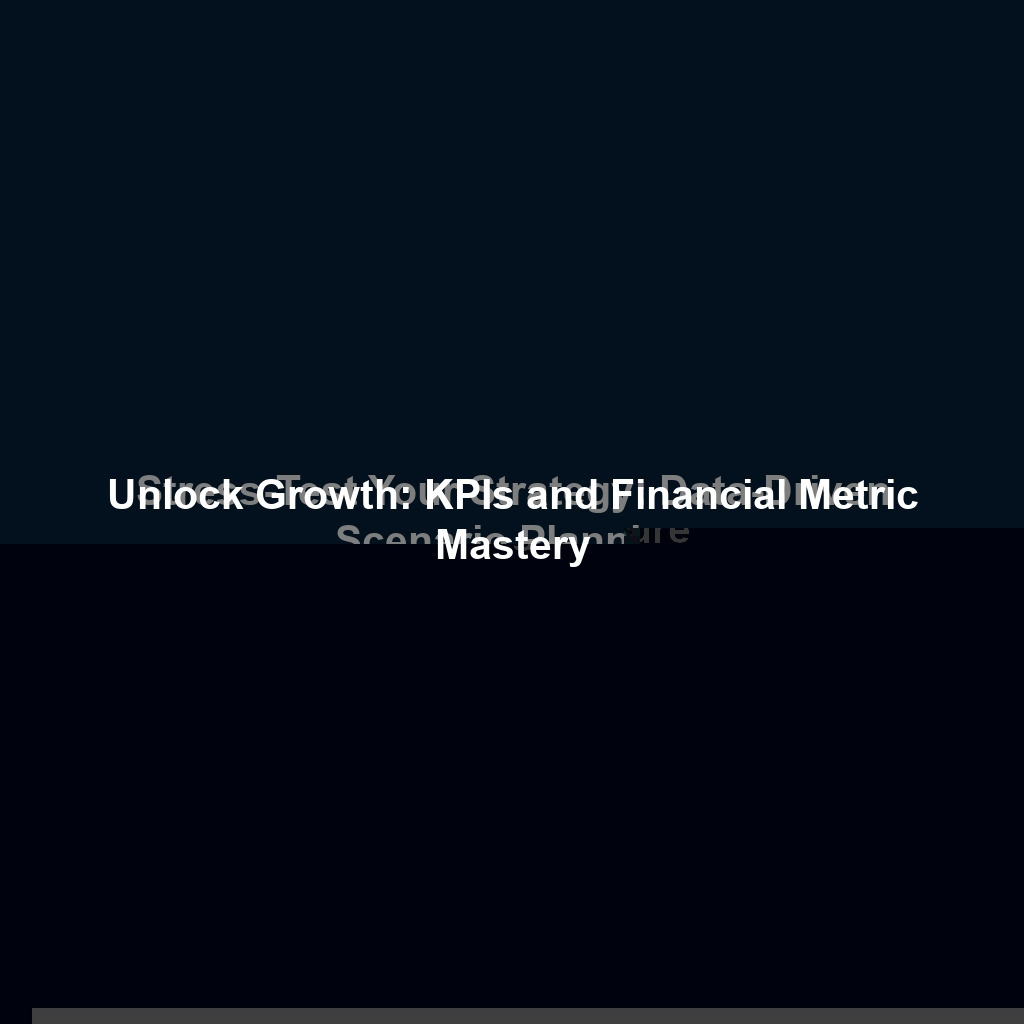In today’s complex business landscape, the ability to make sound decisions consistently is a critical competitive advantage. However, many organizations struggle with inconsistent decision-making processes, cognitive biases, and a lack of shared understanding. The solution? Cultivating a structured thinking culture – a framework that empowers employees to approach challenges systematically, analyze information objectively, and arrive at well-reasoned conclusions.
This article provides a comprehensive guide to building a structured thinking culture within your organization. We’ll explore the benefits of this approach, delve into practical training strategies, examine essential decision-making tools, and offer actionable steps to foster a mindset of continuous improvement in your organization’s decision-making capabilities.
Why Build a Structured Thinking Culture?
Before diving into the “how,” let’s address the “why.” A structured thinking culture offers a multitude of benefits that directly impact your bottom line:
- Improved Decision Quality: By applying structured frameworks, you minimize biases and increase the likelihood of optimal outcomes.
- Enhanced Problem-Solving: Structured thinking provides a systematic approach to break down complex problems into manageable components.
- Increased Efficiency: Clear processes and shared understanding streamline decision-making, saving time and resources.
- Better Communication: Structured thinking fosters clear and concise communication, reducing misunderstandings and improving collaboration.
- Reduced Risk: By thoroughly evaluating potential risks and uncertainties, you can make more informed and resilient decisions.
- Increased Innovation: Structured thinking can also aid creative processes by offering a framework to systematically explore, test, and refine ideas.
Consider a real-world scenario: A large manufacturing company faced declining market share due to increasing competition. Their initial reaction was to cut costs across the board. However, after implementing structured thinking training, they realized the core issue was outdated product design. By using a decision matrix to evaluate various options, they chose to invest in R&D, leading to the launch of innovative products that regained their market leadership. This shift in focus was a direct result of a more structured and analytical approach to their challenges.
Key Insight: Organizations with strong structured thinking cultures are more agile, adaptable, and better equipped to navigate uncertainty and disruption.
Training Strategies for Cultivating Structured Thinking
The foundation of a structured thinking culture is a workforce equipped with the necessary skills and knowledge. Effective training programs are crucial for embedding these principles across all levels of your organization. Here’s a breakdown of key training strategies:
1. Foundational Workshops on Structured Thinking Principles
Start with the basics. These workshops should introduce fundamental concepts such as:
- Problem Definition: Accurately defining the problem is the first and most critical step.
- Logical Reasoning: Understanding deductive and inductive reasoning, as well as common logical fallacies.
- Critical Thinking: Evaluating information objectively and identifying biases.
- Frameworks and Models: Introducing structured thinking frameworks like MECE (Mutually Exclusive, Collectively Exhaustive), the 5 Whys, and SWOT analysis.
- Decision-Making Biases: Awareness of common cognitive biases (e.g., confirmation bias, anchoring bias) and strategies for mitigating their impact.
Example: A workshop could begin with a group exercise where participants are presented with a complex business challenge (e.g., declining customer satisfaction). They are then guided through a structured problem-solving process, starting with defining the problem using the “5 Whys” technique, identifying potential root causes, and developing potential solutions based on logical reasoning and critical evaluation. This hands-on experience solidifies their understanding of the concepts and demonstrates their practical application.
2. Role-Specific Training and Application
Generic training is a good start, but tailoring the content to specific roles within the organization significantly improves its impact. For example:
- Project Managers: Focus on tools and techniques for project planning, risk management, and decision-making under uncertainty.
- Sales Teams: Emphasize structured communication techniques, needs analysis frameworks, and persuasive argumentation skills.
- Marketing Teams: Cover market research methodologies, data analysis techniques, and A/B testing principles.
- Leadership Teams: Focus on strategic decision-making frameworks, scenario planning, and organizational change management.
Example: For a marketing team, a training session could focus on designing effective A/B tests to optimize website conversion rates. This would involve teaching them how to formulate hypotheses, design experiments, analyze data, and draw meaningful conclusions. They could then apply these skills to real-world scenarios, such as testing different website headlines or call-to-action buttons.
3. Ongoing Coaching and Mentoring
Training is a one-time event, but building a culture requires continuous reinforcement. Implement coaching and mentoring programs to provide ongoing support and guidance to employees as they apply structured thinking principles in their daily work. Assign experienced individuals to mentor junior colleagues, provide feedback on their decision-making processes, and offer practical advice on how to overcome challenges.
I once mentored a junior analyst who was struggling to present her findings effectively. She had gathered a wealth of data, but her presentations were confusing and lacked a clear narrative. By coaching her on structured communication techniques, such as using the STAR method (Situation, Task, Action, Result) to frame her arguments, and the pyramid principle for organizing her information, she was able to significantly improve the clarity and impact of her presentations. This not only boosted her confidence but also enabled her to influence key decisions within the organization.
4. Incorporate Structured Thinking into Performance Reviews
Make structured thinking a core competency by integrating it into your performance review process. Evaluate employees on their ability to apply structured thinking principles in their work, provide constructive feedback, and recognize those who consistently demonstrate strong structured thinking skills. This reinforces the importance of structured thinking and encourages employees to continuously improve their skills.
Key Insight: Successful training programs are not just about teaching concepts; they are about creating opportunities for employees to apply those concepts in real-world scenarios and receive feedback on their performance.
Decision-Making Tools and Processes
Training provides the knowledge, but tools and processes provide the structure. Implementing the right tools and processes can significantly enhance your organization’s decision-making capabilities. Here are some essential elements:
1. Decision Matrices
A decision matrix is a powerful tool for evaluating multiple options against a set of criteria. It allows you to systematically compare alternatives and identify the best solution based on your specific needs and priorities.
How to Use: Define your decision criteria, assign weights to each criterion based on their importance, and then score each option against each criterion. Multiply the scores by the weights and sum the results to determine the overall score for each option. The option with the highest score is generally the preferred choice.
Example: A software development company needs to choose a new project management tool. They define criteria such as cost, features, ease of use, and integration with existing systems. They assign weights to each criterion based on their relative importance. They then evaluate several different project management tools against these criteria and use the decision matrix to identify the tool that best meets their needs.
2. Root Cause Analysis Techniques
Root cause analysis (RCA) is a systematic approach to identifying the underlying causes of problems or events. It helps you to address the root of the problem rather than just treating the symptoms.
Popular Techniques:
- 5 Whys: Repeatedly asking “why” to drill down to the root cause.
- Fishbone Diagram (Ishikawa Diagram): A visual tool for identifying potential causes of a problem.
- Fault Tree Analysis: A deductive approach to identify potential causes of a system failure.
Example: A manufacturing company experiences a sudden increase in product defects. Using the 5 Whys technique, they ask “Why are the products defective?” After several iterations, they discover that the root cause is a malfunctioning machine that needs to be repaired or replaced.
3. Scenario Planning
Scenario planning is a strategic planning method used to make flexible long-term plans in the face of uncertainty. It involves identifying key uncertainties, developing plausible scenarios based on those uncertainties, and then developing strategies that are robust across multiple scenarios.
How to Use: Identify the key uncertainties facing your organization (e.g., economic conditions, technological advancements, regulatory changes). Develop a small number of plausible scenarios based on these uncertainties. For each scenario, develop strategies that your organization could pursue. Evaluate the robustness of each strategy across the different scenarios. Choose the strategies that are most likely to succeed regardless of which scenario unfolds.
Example: An energy company uses scenario planning to prepare for the future of the energy market. They develop scenarios based on different levels of government regulation, technological innovation, and consumer demand. For each scenario, they develop strategies for investing in renewable energy, developing new technologies, and managing their existing fossil fuel assets. This helps them to make more informed investment decisions and prepare for a range of possible futures.
4. Checklists and Standard Operating Procedures (SOPs)
Checklists and SOPs provide a standardized approach to decision-making, ensuring that all relevant factors are considered and that decisions are made consistently. They are particularly useful for routine decisions and tasks.
Benefits: Reduce errors, improve efficiency, and ensure compliance with regulations.
Example: An airline uses checklists to ensure that all safety procedures are followed before takeoff. These checklists cover everything from checking the weather conditions to inspecting the aircraft’s engines. This helps to reduce the risk of accidents and ensures the safety of passengers and crew.
5. Data Visualization and Analysis Tools
Data-driven decision-making is essential in today’s business environment. Equip your employees with data visualization and analysis tools to help them identify trends, patterns, and insights from data. These tools can range from simple spreadsheets to sophisticated business intelligence platforms.
Example: A retail company uses data visualization tools to analyze sales data and identify underperforming products. They then use this information to make decisions about pricing, promotions, and product placement. This helps them to increase sales and improve profitability.
Key Insight: The key to successful implementation is choosing the right tools and processes for your specific needs and ensuring that employees are properly trained on how to use them effectively.
Fostering a Mindset of Continuous Improvement
Building a structured thinking culture is not a one-time project; it’s an ongoing journey. To sustain a culture of continuous improvement, consider the following strategies:
1. Encourage Feedback and Reflection
Create a culture where employees feel comfortable providing feedback on decision-making processes and outcomes. Encourage them to reflect on their own decisions and identify areas for improvement.
How to Implement:
- Post-Decision Reviews: Conduct regular reviews of past decisions to identify what worked well and what could be improved.
- Anonymous Feedback Mechanisms: Provide channels for employees to provide anonymous feedback on decision-making processes.
- Open Communication Channels: Encourage open dialogue and communication between employees and management about decision-making.
2. Promote Knowledge Sharing and Collaboration
Foster a culture of knowledge sharing and collaboration, where employees are encouraged to share their insights, experiences, and best practices with others. This can be achieved through various channels, such as:
- Internal Knowledge Bases: Create a central repository for documenting decision-making processes, tools, and best practices.
- Communities of Practice: Establish communities of practice around specific decision-making topics.
- Cross-Functional Teams: Encourage collaboration between different departments and teams to promote diverse perspectives.
3. Celebrate Successes and Learn from Failures
Recognize and celebrate successful decisions that are based on structured thinking principles. Also, create a safe environment where employees feel comfortable admitting mistakes and learning from failures. Frame failures as learning opportunities rather than sources of blame.
4. Leadership Commitment and Modeling
Leadership plays a crucial role in fostering a structured thinking culture. Leaders must demonstrate a commitment to structured thinking principles and model these behaviors in their own decision-making processes. This includes:
- Clearly articulating the importance of structured thinking.
- Using structured frameworks in their own decision-making.
- Encouraging employees to use structured thinking techniques.
- Providing resources and support for structured thinking initiatives.
5. Regularly Evaluate and Adapt
Continuously evaluate the effectiveness of your structured thinking initiatives and adapt your approach as needed. Monitor key metrics such as decision quality, efficiency, and employee satisfaction. Solicit feedback from employees and stakeholders to identify areas for improvement.
For instance, a financial services company initially implemented a complex decision-making framework that was difficult for employees to understand and use. After gathering feedback, they simplified the framework and provided additional training, resulting in a significant increase in its adoption and effectiveness. This experience highlighted the importance of regularly evaluating and adapting your approach to ensure that it meets the needs of your organization.
Key Insight: A culture of continuous improvement requires a commitment to learning, adaptation, and a willingness to challenge the status quo.
Conclusion
Building a structured thinking culture is a strategic investment that can yield significant returns for your organization. By implementing effective training programs, providing access to essential decision-making tools, and fostering a mindset of continuous improvement, you can empower your employees to make better decisions, solve complex problems more effectively, and drive sustainable business results.
Remember, this is a journey, not a destination. Start small, focus on building momentum, and celebrate your successes along the way. With consistent effort and commitment, you can transform your organization into a decision-making powerhouse.
Are you ready to transform your organizational decision making? Contact us today to discuss tailored structured thinking training and implementation solutions for your team.
References and Further Reading
- Harvard Business Review on Decision Making: hbr.org/topic/decision-making
- “Thinking, Fast and Slow” by Daniel Kahneman
- “The McKinsey Mind” by Ethan Rasiel and Paul N. Friga
This article was optimized and published by Content Hurricane.


